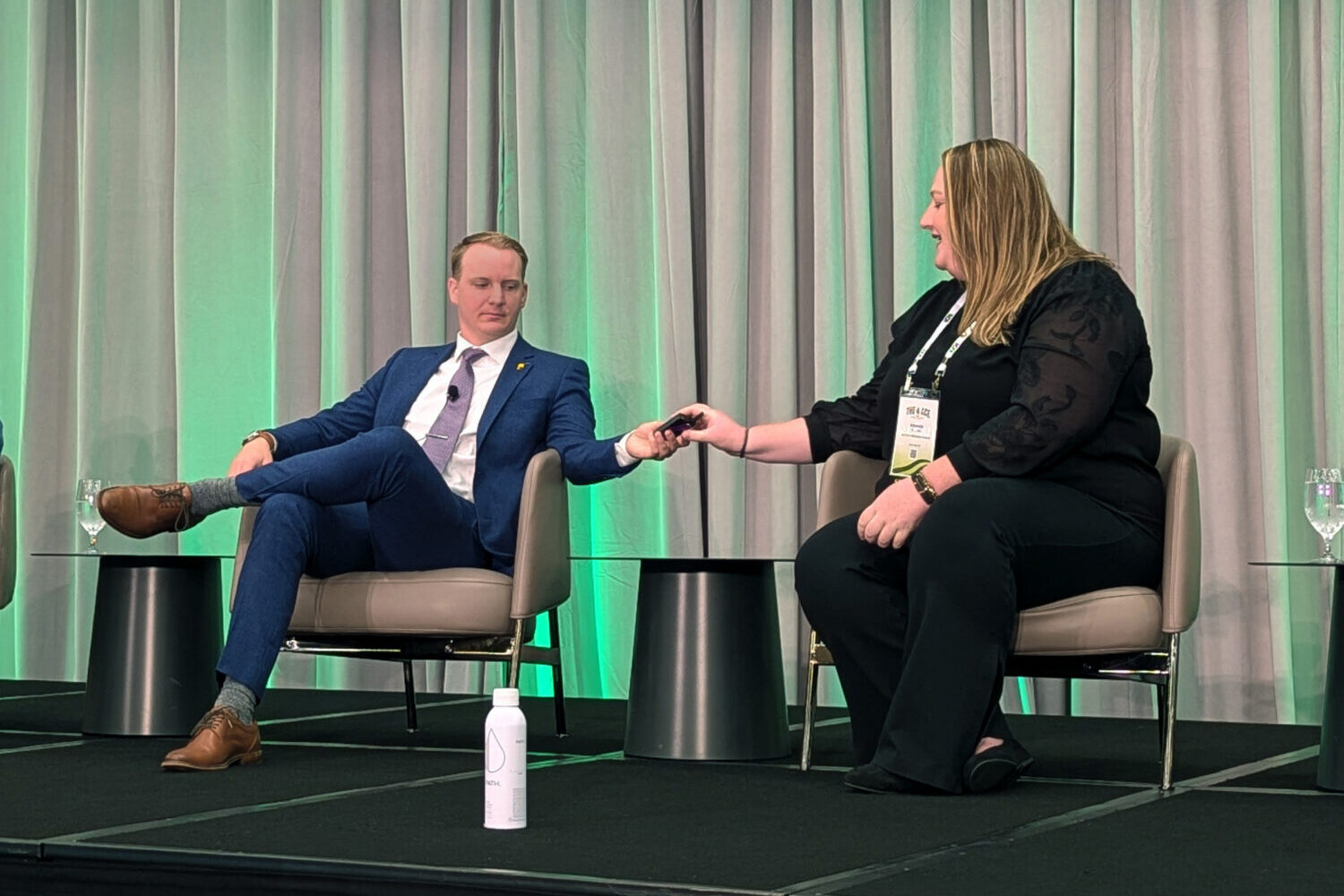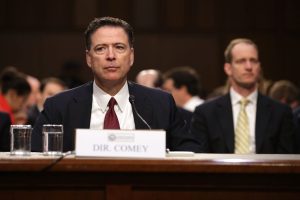Fuel options at a central Sioux Falls gas station, as seen on Aug. 22, 2025. (John Hult/South Dakota Searchlight)
SIOUX FALLS — The ethanol industry won’t tell you to fill your vehicle with illegal fuel, but thanks to a long-term study of fleet vehicles in Nebraska, it now says your vehicle would be fine if you did.
Most of the ethanol-blended gasoline sold in the U.S. is 90% petroleum and 10% ethanol. The Trump administration issued an executive order in April allowing nationwide, year-round sales of E15, despite concerns that it worsens air pollution in some areas during the summer. The next administration could rescind it, so some farm-state lawmakers are pushing to codify E15 availability.
The leader of the Nebraska Ethanol Board said Friday that a 30% ethanol blend — approved by the EPA for use in flex-fuel vehicles, but not in others — is “the fuel of the future.” Flex-fuel vehicles can run on gas, ethanol, or any blend of the two.
A representative for South Dakota Corn, meanwhile, said a marketing partnership with KwikStar shows that teens are more likely to start their driving careers buying E15 if they see it as a way to save money for snacks. Typically, the more ethanol a fuel has, the cheaper it is.
Both speakers at the the American Coalition for Ethanol’s annual conference in downtown Sioux Falls pressed the idea that ethanol — and the corn markets that rely on it — can overcome consumer skittishness with the right message.
Nebraska study: Most cars do well with E30
Ben Rhodes, executive director of the Nebraska Ethanol Board, backed his claims on 30% ethanol’s fuel efficiency with a presentation about a long-term study of its use in Nebraska state government fleet vehicles.
The first phase came in 2019, when 50 non-flex-fuel vehicles of various model years, all located in Lincoln or Omaha, filled up with either E30 or E15 for a year. The study required a waiver from the EPA, he said.

The results of the study’s first phase were published in a peer-reviewed paper in 2021, and showed that the vehicles using E30 got similar gas mileage, suffered no engine damage and produced fewer carbon dioxide emissions.
Rhodes said the second phase of the study offers stronger proof still. Since 2023, 100 state fleet vehicles have used either E30 or E10 and the results have been similar. That phase used E10 because the fleet vehicles were used across the entire state, and E15 isn’t available everywhere.
Newer vehicles lost about one mile per gallon with E30, Rhodes said.
“For the older vehicles, 2003 to 2013, E30 had a better fuel economy,” Rhodes said.
After the presentation, Rhodes told Searchlight that “we shouldn’t take our eyes off the prize” of E15 to start pushing for the adoption of E30. Even so, he said, the fleet study shows that there’s a future for higher blends.
“This is a long term, forward thinking project, because we know that the data will have to lead,” Rhodes said. “The horse has to pull the cart.”
Ron Lamberty, the ethanol coalition’s chief marketing officer, said the Nebraska results are “the best study we’ve seen” to confirm a claim he’s heard for years from farmers: That they don’t lose mileage with E30.
“Even then, I was skeptical,” Lamberty said. “Are they saying that because they love ethanol, or is it true? Now we’ve shown it to be true.”
Lamberty stressed that he can’t recommend people use E30 in a non-flex-fuel vehicle, given its legal status. But he also said he’d be happy to see the EPA issue a fine to a driver for ignoring that advice, and for that driver to challenge the EPA, “because they would lose the case.”
“Then we’d have a legal judgment,” Lamberty said, to show that the fuel is safe to use.
Kwik Star partnership: Selling ethanol to young people
Ethanol’s cultural stock as an antidote to climate change and reducer of carbon emissions has fallen since its mainstream adoption decades ago.
Some studies performed by researchers outside the industry have suggested that the carbon intensity and water demands of corn cultivation cancel out the environmental benefits of ethanol. It’s been more than a decade since the Environmental Working Group lambasted the industry with a report called “Ethanol’s Broken Promise,” which accused it of causing the conversion of grassland to crops. Greenpeace opposes the U.S. biofuels mandate, which incentivizes the use of ethanol, citing similar reasoning.
Ethanol backers have pushed back on such assertions.

Amanda Bechen, director of marketing and communications for South Dakota Corn, said last year’s marketing partnership with the convenience store chain Kwik Stop was part of a strategy to target the youngest generation of drivers, ideally before they develop opinions on ethanol.
“Fourteen-year-olds can drive,” Bechen said. “We want to make sure that they see this message and before they develop the behavior of not using ethanol, so we get them to understand that this is a fuel that they can use for the rest of their life.”
The “Fuel Up South Dakota” marketing campaign, which ran from last July through the end of June 2025, used splashy signs with taglines like “it’s okay to go low” at the pump to push lower-priced E15. Video ads encouraging young people to save their money for snacks were aired across social media, as well as during televised Summit League collegiate basketball games and on streaming video platforms.
Bechen visits high schools as part of her regular duties, and said teens tend to know little about the kinds of fuel they’ve often just recently begun to put in their cars. Gas is labeled by octane, but she said kids don’t usually know what the numbers mean. The number “87” corresponds to E10, “88” to E15. An “89” on the pump handle would signal a mid-grade fuel without ethanol.
Bechen told South Dakota Searchlight she’s heard teens say they pick “87” because it’s Kansas City Chiefs star Travis Kelce’s jersey number, or “89” because it corresponds to the album “1989” from Kelce’s girlfriend Taylor Swift.
The Kwik Star promotion’s biggest day came on March 29. On that day, the campaign ran a promotion offering 88-octane E15 fuel for $1.88 a gallon, from 8 a.m. to 8 p.m.
Bechen said it was “a landmark event, the largest single day of sales for unleaded 88 in South Dakota” for Kwik Star.
“Some stations did run out,” she said.
GET THE MORNING HEADLINES.






